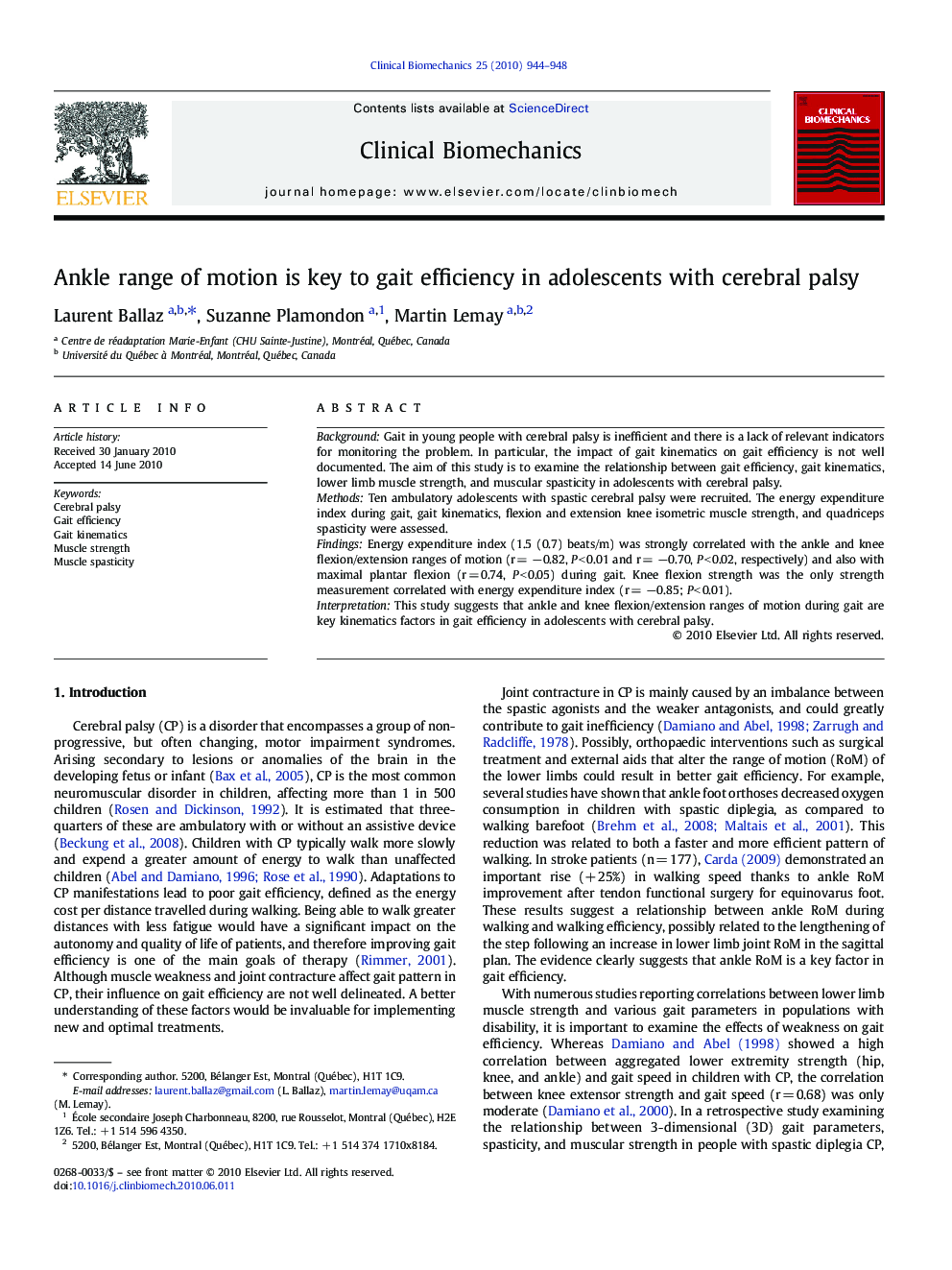| Article ID | Journal | Published Year | Pages | File Type |
|---|---|---|---|---|
| 4050992 | Clinical Biomechanics | 2010 | 5 Pages |
BackgroundGait in young people with cerebral palsy is inefficient and there is a lack of relevant indicators for monitoring the problem. In particular, the impact of gait kinematics on gait efficiency is not well documented. The aim of this study is to examine the relationship between gait efficiency, gait kinematics, lower limb muscle strength, and muscular spasticity in adolescents with cerebral palsy.MethodsTen ambulatory adolescents with spastic cerebral palsy were recruited. The energy expenditure index during gait, gait kinematics, flexion and extension knee isometric muscle strength, and quadriceps spasticity were assessed.FindingsEnergy expenditure index (1.5 (0.7) beats/m) was strongly correlated with the ankle and knee flexion/extension ranges of motion (r = −0.82, P < 0.01 and r = −0.70, P < 0.02, respectively) and also with maximal plantar flexion (r = 0.74, P < 0.05) during gait. Knee flexion strength was the only strength measurement correlated with energy expenditure index (r = −0.85; P < 0.01).InterpretationThis study suggests that ankle and knee flexion/extension ranges of motion during gait are key kinematics factors in gait efficiency in adolescents with cerebral palsy.
